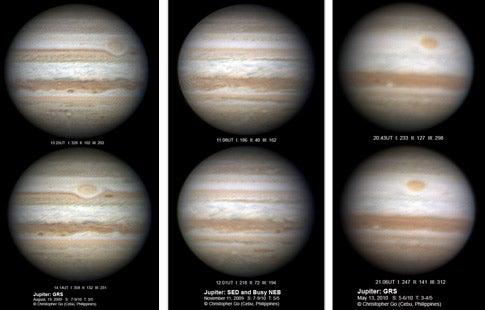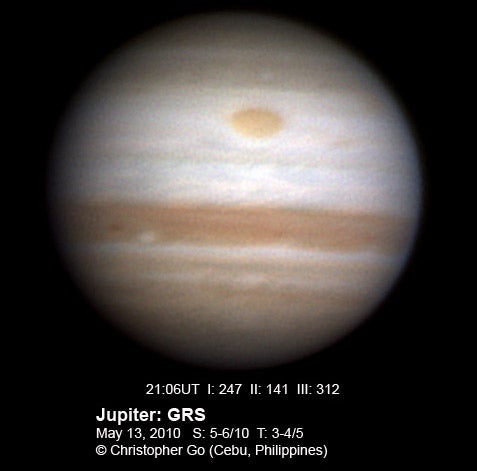One of Jupiter’s major features — its South Equatorial Belt — is gone. And although the current disappearance probably resulted from intense storm activity within Jupiter’s atmosphere, planetary scientists find themselves at a loss to explain what the trigger was. They also don’t know how long the belt will remain invisible.
This isn’t the first time this phenomenon has occurred, and it probably won’t be the last. The South Equatorial Belt (SEB) disappeared in 1973 and 1991. “I’ve been watching Jupiter for 4 decades,” said Astronomy Contributing Editor Raymond Shubinski, “and I’ve seen Jupiter with only one belt at least twice before. It’s a jarring sight if you’re familiar with the planet. It’s like seeing Jupiter without one of its large satellites, but a belt can stay hidden for months.”
Astronomers noticed the missing belt after Jupiter reappeared in the morning sky in March. Just prior to that, it was invisible because it lay behind the Sun from our point of view (a point in Jupiter’s orbit called solar conjunction). At Astronomy magazine, amateur astronomers from around the world send us images of Jupiter on a daily basis. “We’ve been marveling at Jupiter’s one-belt appearance for several months now,” said Senior Editor Richard Talcott. “Now we’re all waiting to see how the SEB will reappear.”
Jupiter’s opposition — the point in its orbit opposite the Sun as seen from Earth (and the best time to observe it) — arrives on the last day of summer in the Northern Hemisphere. On September 21, the planet will appear bigger and brighter than at any time in 47 years. It will subtend an angle of 49.9 arcseconds (close to its greatest possible size of 50.1 arcseconds), and it will glare at magnitude -2.9 — 4 times brighter than the brightest nighttime star, Sirius. If you’d like to learn more about observing Jupiter, be sure to read “The king of planets reigns in September” in the September issue of Astronomy, which goes on sale August 3.

Click here to see a larger view.
- StarDome: Locate Jupiter in your night sky with our interactive star chart.
- Sign up for our free weekly e-mail newsletter.
- Discuss observations of Jupiter in our Reader Forums.











